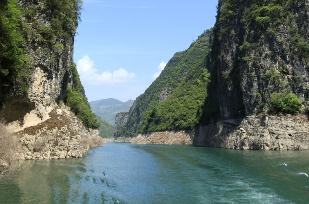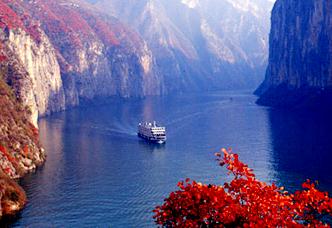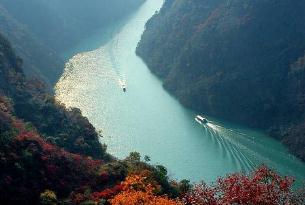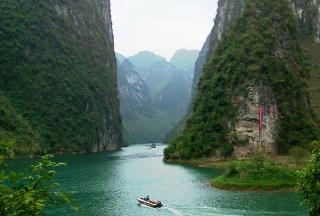Three Gorges
The Three Gorges extend 193 kilometers along the Yangtze River from the western Baidicheng in Sichan Province, to Nanjinguan of Yichang city in Hubei Province in the east and are considered as one of China's finest areas of scenery, cultural history and sources of tourism.


The shortest of the Three Gorges (8 kilometers) is Qutang Gorge. It is considered the most dramatic by many visitors. The river navigates through the gorge's sheer, steep cliffs where the Meng Liang staircase from the Song Dynasty can be seen.
Different from the straight and craggy Qutang Gorge, the 44-kilometer long Wu Gorge is known for its exquisite deep valleys and forest covered mountains.
Qutang Gorge
Wu Gorge extends 40 kilometers from the mouth of Daning River of Wushan Mountain in the west to Guandukou of Badong in the east. The Wu Gorge is known for its deep valley and quiet beauty. The "Twelve Peaks" lining the banks of Wu Gorge, have been admired by visitors from all over the world. It is said that if you look carefully, a silhouette of a goddess can be seen at the top of Goddess Peak.
The twelve peaks of Wushan Mountain all raise to the blue sly. They are endowed with various fascinating shapes. Among them, the most fabulous is the Peak of Goddess. It pierces through the heaven, and towers over the Yangtze River. A protruding rock of the Peak has the shape of a slim girl shrouded in clouds and mist faintly visible as if clad in fine gauze dress, looking attractive and exuding tenderness and love.


Xiling Gorge
Xiling Gorge is renowned for being extremely perilous. The gorge, 80-km-long, is the longest of the Yangtze's Three Gorges stretching from Xiangxikou in the east to Nanjingguan Pass in the west and covering two prefectures in Hubei Province. It is at this spot that the journey appears to be most perilous; the water is full of turbulent whirlpools and dangerous shoals.










